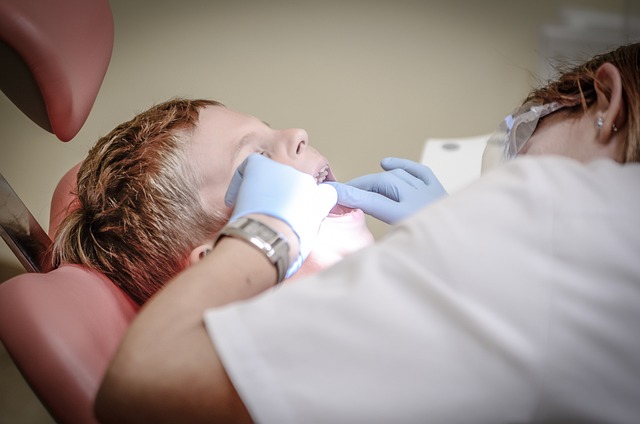Cleaning a Retainer After Strep Throat: Hygiene Tips
Keeping your retainer clean is crucial for maintaining good oral hygiene, but it becomes even more important after battling with strep throat. Streptococcal bacteria can easily latch onto your retainer, posing a risk of reinfection if not properly sanitized. In this article, we will equip you with the know-how and expert tips to ensure your retainer remains squeaky clean, promoting a speedy recovery while safeguarding your dental health. So let’s dive in and discover the best practices for cleaning your retainer after strep throat, ensuring optimal hygiene without any unnecessary fuss.
1. Understanding the Importance of Cleaning Your Retainer after Strep Throat
After recovering from strep throat, it is crucial to understand the importance of cleaning your retainer properly. Failure to do so can lead to reinfection or the spread of harmful bacteria. Here are some key points to keep in mind:
1. Remove your retainer before eating or drinking: This will prevent food particles and liquids from getting trapped in your retainer, which can create a breeding ground for bacteria.
2. Rinse your retainer with water: After removing it, rinse your retainer under running water to remove any loose particles. This will help prevent the buildup of debris.
3. Brush your retainer: Use a soft-bristled toothbrush and non-abrasive toothpaste to gently brush your retainer. This will help remove any remaining bacteria and plaque.
4. Soak your retainer: Soaking your retainer in a denture cleaner or a mixture of water and vinegar can help kill bacteria. Follow the instructions provided with the cleaning solution for the appropriate duration.
5. Store your retainer properly: After cleaning, store your retainer in a clean case to protect it from dust and bacteria. Avoid using a cloth or tissue as this can introduce unwanted contaminants.
By following these simple steps, you can ensure that your retainer remains clean and free from harmful bacteria, reducing the risk of reinfection and promoting good oral hygiene.

2. Step-by-Step Guide to Properly Cleaning and Disinfecting Your Retainer
Properly cleaning and disinfecting your retainer is essential for maintaining good oral hygiene and preventing the growth of harmful bacteria. Follow these step-by-step instructions to ensure your retainer stays clean and fresh:
1. Remove the retainer from your mouth: Gently take out the retainer by carefully sliding it off your teeth. Be cautious to avoid any damage or bending.
2. Rinse with lukewarm water: Start by rinsing your retainer with lukewarm water to remove any loose debris or food particles. Avoid using hot water, as it may cause warping or damage to the retainer.
- 3. Brush with a soft toothbrush: Apply a small amount of non-abrasive toothpaste onto a soft toothbrush. Gently brush the retainer, focusing on both the inside and outside surfaces. Pay extra attention to any crevices or hard-to-reach areas.
- 4. Rinse again: Thoroughly rinse the retainer with lukewarm water to remove any remaining toothpaste residue.
- 5. Soak in a retainer cleaning solution: Place your retainer in a container filled with a retainer cleaning solution or a mixture of equal parts water and hydrogen peroxide. Let it soak for the recommended time, usually 15-30 minutes.
- 6. Rinse and dry: After soaking, remove the retainer from the solution and rinse it thoroughly with lukewarm water. Gently pat it dry with a clean towel or allow it to air dry before storing.
By following these simple steps regularly, you can keep your retainer clean, free from bacteria, and extend its lifespan. Remember to consult your orthodontist or dentist for specific cleaning instructions tailored to your retainer type, as different materials may require unique care.

3. Essential Hygiene Tips for Maintaining a Clean and Germ-free Retainer
Maintaining a clean and germ-free retainer is crucial for your oral health. Here are some essential hygiene tips to ensure your retainer stays in pristine condition:
1. Clean your retainer daily: It is essential to clean your retainer thoroughly every day to remove any plaque, bacteria, or food particles. Use a soft toothbrush and non-abrasive toothpaste to gently brush the retainer. Rinse it thoroughly with water afterward to remove any remaining toothpaste residue.
2. Soak your retainer regularly: Soaking your retainer in a denture cleaner or retainer cleaning solution can help eliminate any stubborn stains or bacteria. Follow the instructions provided with the cleaner and soak your retainer for the recommended time. Avoid using hot water, as it can warp the retainer. Remember to rinse the retainer thoroughly with water before placing it back in your mouth.
3. Handle your retainer with care: Always handle your retainer with clean hands to prevent transferring any bacteria or germs to your mouth. Avoid using sharp objects to remove your retainer, as they can damage the structure. Instead, use your fingers or a retainer removal tool, if provided, to take it out. Store your retainer in a clean and dry case when not in use to protect it from dirt and bacteria.
4. Keep your retainer away from heat and chemicals: To maintain the shape and integrity of your retainer, avoid exposing it to excessive heat or harsh chemicals. High temperatures can cause the retainer to warp or lose its shape, while chemicals can deteriorate the material. Additionally, refrain from using mouthwash or alcohol-based solutions to clean the retainer, as they can be too harsh.
By following these essential hygiene tips, you can ensure that your retainer remains clean, germ-free, and in optimal condition. Remember to consult your dentist if you have any concerns or questions about caring for your retainer.
4. Choosing the Right Cleaning Solution for Your Retainer: Expert Recommendations
When it comes to choosing the right cleaning solution for your retainer, it’s important to consider expert recommendations. Here are some key factors to keep in mind:
1. Safety: Opt for a cleaning solution that is safe for both your retainer and your oral health. Look for products that are specifically designed for retainers and orthodontic appliances.
2. Effectiveness: Choose a cleaning solution that effectively removes bacteria, plaque, and tartar from your retainer. Look for products that are known for their antimicrobial properties and can effectively eliminate odors.
3. Convenience: Consider a cleaning solution that is easy to use and fits into your daily routine. Look for options that require minimal effort, such as soaking your retainer in a cleaning solution for a few minutes.
4. Compatibility: Ensure that the cleaning solution you choose is compatible with the material of your retainer. Different retainers may require different cleaning solutions, so it’s important to read the manufacturer’s recommendations.
By following these expert recommendations, you can ensure that you choose the right cleaning solution for your retainer, keeping it clean, fresh, and free from harmful bacteria.

5. Best Practices for Disinfecting Your Retainer to Prevent Reinfection
Properly disinfecting your retainer is crucial to prevent reinfection and maintain good oral hygiene. Here are some best practices to follow:
Clean your retainer daily: Make it a habit to clean your retainer every day to remove any bacteria or food particles that may have accumulated. Use a soft toothbrush and mild, non-abrasive soap to gently scrub the retainer. Rinse it thoroughly with warm water before placing it back in your mouth.
Use a retainer cleaning solution: In addition to regular cleaning, using a retainer cleaning solution can provide a deeper clean. These solutions are specifically designed to kill bacteria and remove stains. Follow the instructions provided with the solution and soak your retainer for the recommended amount of time. Rinse it thoroughly before use.
Avoid harsh chemicals: While it’s important to disinfect your retainer, avoid using harsh chemicals such as bleach or alcohol-based solutions. These can damage the retainer and may not be safe for oral use. Stick to mild, non-abrasive cleaning solutions recommended for retainers.
Store your retainer properly: When you’re not wearing your retainer, store it in a clean, dry case to prevent contamination. Avoid placing it in a napkin or tissue, as these can easily attract bacteria. Clean the storage case regularly to ensure it remains sanitary.
6. Ensuring Long-Term Retainer Hygiene: Incorporating Cleaning into Your Daily Routine
Proper retainer hygiene is essential for maintaining a healthy smile and prolonging the lifespan of your retainer. Incorporating cleaning into your daily routine is a simple and effective way to ensure the longevity of your retainer. Here are some tips to help you keep your retainer clean:
- Brush your retainer daily: Use a soft toothbrush and non-abrasive toothpaste to gently brush your retainer. This will help remove any plaque or bacteria that may have accumulated throughout the day.
- Soak your retainer regularly: Soaking your retainer in a denture cleaner or a mixture of water and mild dish soap can help eliminate any stubborn stains or odors. Be sure to follow the manufacturer’s instructions for soaking time.
- Avoid hot water and harsh chemicals: Hot water can warp your retainer, so always use lukewarm water when cleaning. Additionally, avoid using harsh chemicals or abrasive cleaners, as they can damage the materials of your retainer.
Maintaining good oral hygiene is also crucial for the health of your retainer. Be sure to brush and floss your teeth regularly, and visit your dentist for routine check-ups. By incorporating these simple cleaning habits into your daily routine, you can ensure that your retainer stays clean, comfortable, and effective in the long run.
7. The Dos and Don’ts of Retainer Cleaning: Expert Advice for a Healthy Mouth
Retainers are an essential part of maintaining a healthy mouth after orthodontic treatment. To ensure optimal oral hygiene, it is important to follow the dos and don’ts of retainer cleaning. Here are some expert tips to keep your retainer clean and your mouth healthy:
Dos:
1. Rinse your retainer with lukewarm water before and after each use. This helps remove any loose debris and prevents the buildup of bacteria.
2. Brush your retainer gently using a soft-bristled toothbrush and non-abrasive toothpaste. This helps remove plaque and bacteria from the retainer’s surface.
3. Soak your retainer regularly in a denture cleaner or a mixture of equal parts water and vinegar. This helps disinfect and remove any lingering bacteria.
4. Keep your retainer in a clean case when not in use to prevent it from coming into contact with harmful bacteria or getting lost.
Don’ts:
1. Don’t use hot water to clean your retainer, as it may distort its shape.
2. Avoid using toothpaste that contains abrasive ingredients, such as baking soda or whitening agents, as they can scratch the surface of your retainer.
3. Don’t use mouthwash or alcohol-based solutions to clean your retainer, as they can cause damage or discoloration.
4. Refrain from eating or drinking while wearing your retainer, as food particles and liquids can get trapped and lead to bacterial growth.
Following these dos and don’ts of retainer cleaning will help ensure that your retainer remains clean, hygienic, and effective in maintaining the results of your orthodontic treatment. Remember to consult your orthodontist for specific instructions and recommendations tailored to your individual needs.
Frequently Asked Questions
Q: What is the best way to clean a retainer after having strep throat?
A: After recovering from strep throat, it is crucial to maintain proper hygiene for your retainer. Start by removing any visible debris or food particles by gently brushing it with a soft-bristle toothbrush.
Q: Can I use regular toothpaste to clean my retainer?
A: It is generally recommended to avoid using regular toothpaste as it might be too abrasive for your retainer. Instead, it is best to use a mild dishwashing liquid or a retainer-specific cleaning solution.
Q: How often should I clean my retainer after having strep throat?
A: During and after your strep throat recovery, it is highly advised to clean your retainer at least twice a day. This frequency will help prevent the growth of bacteria and maintain good oral health.
Q: Should I soak my retainer in mouthwash?
A: While you may think soaking your retainer in mouthwash is an effective cleaning method, it is not recommended. Mouthwash often contains alcohol or other chemicals that can damage the retainer’s material. Stick to using a retainer-specific cleaning solution or mild dishwashing liquid.
Q: Is it necessary to sanitize my retainer after strep throat?
A: Sanitizing your retainer is a crucial step to ensure complete elimination of bacteria. You can achieve this by rinsing your retainer with an antiseptic mouthwash or by soaking it in a mixture of equal parts water and hydrogen peroxide for a few minutes.
Q: Can I use hot water to clean my retainer?
A: It is important to avoid using hot water to clean your retainer, as it may warp or damage the plastic. Instead, use lukewarm water to rinse your retainer thoroughly.
Q: How should I store my retainer after cleaning it post-strep throat?
A: After cleaning your retainer, it is advisable to store it in a clean, dry case to prevent any contamination. Make sure the case is properly ventilated to avoid moisture buildup, which could lead to bacterial growth.
Q: Are there any additional tips to maintain good oral hygiene while wearing a retainer after strep throat?
A: Absolutely! In addition to cleaning your retainer diligently, make sure to brush your teeth thoroughly twice a day, floss regularly, and maintain a healthy diet. These practices will help prevent the recurrence of strep throat and promote overall oral health.
In Summary
In conclusion, maintaining proper hygiene when cleaning a retainer after strep throat is crucial for your oral health. By following these simple yet effective tips, you can ensure that your retainer remains bacteria-free and safe to use. Remember to always wash your hands before handling your retainer, use a soft toothbrush and mild soap to clean it, and rinse it thoroughly to remove any residue. Additionally, soaking your retainer in an antibacterial solution can provide an extra layer of protection. Lastly, make sure to visit your orthodontist regularly for professional guidance and to keep your retainer in optimal condition. By incorporating these hygiene practices into your routine, you can prevent reinfection and maintain a healthy smile.






